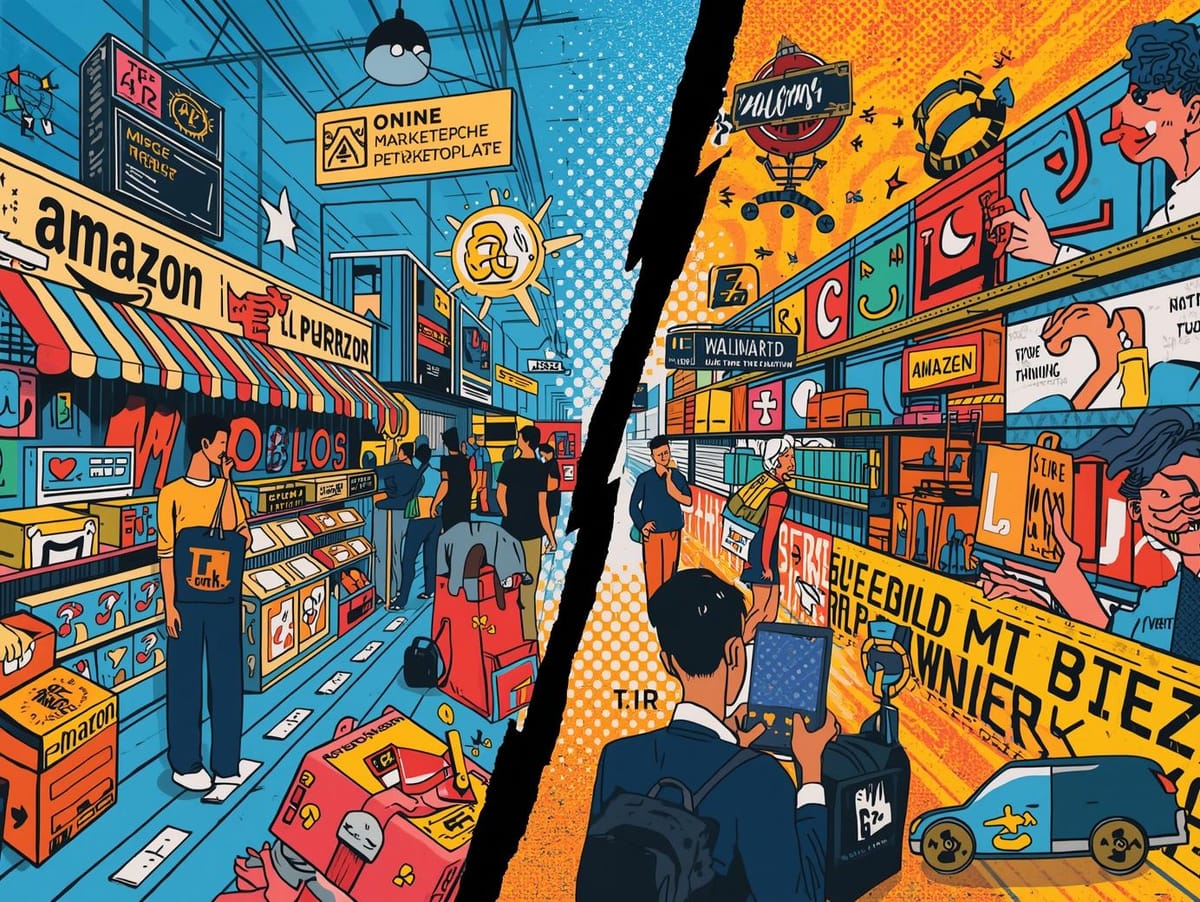Are Marketplaces overtaking DTC as the main digital growth engine?

In 2025, marketplaces are no longer a “nice to have” extension of your ecommerce strategy — they’re the primary digital growth engine. Research cited by Retail TouchPoints shows marketplaces like Amazon, Walmart, Zalando and a long tail of vertical platforms are now outpacing DTC sites as the main driver of incremental online revenue.
The question for founders isn’t “marketplaces or DTC?” anymore. It’s how to balance the two so they reinforce — not cannibalize — each other.
Think “portfolio”, not “either/or”
Treat every channel as an asset in a portfolio with a different job:
- Marketplaces = reach and demand capture
You plug into existing traffic, search behavior and trust. They’re ideal for acquiring high‑intent shoppers at scale and for testing product-market fit in new categories or regions. - DTC = brand, experience and first‑party data
Your own site is where you tell your story, own the customer relationship and capture richer data (LTV, cohorts, preferences) that you can’t get from marketplaces.
The balance to aim for in 2025: marketplaces as your incremental growth engine, DTC as your relationship and margin engine.
Design for role clarity, not channel conflict
Channel conflict happens when both sides compete for the same customer with no clear logic. Instead, define explicit roles and rules.
1. Assortment strategy
- Put broad, proven SKUs on marketplaces to maximize reach and search coverage.
- Keep hero, limited or highly branded collections DTC‑exclusive to protect differentiation and margin.
- Use marketplaces to test new variants (sizes, colors, bundles); promote winners on DTC once you have signal.
2. Pricing and promotion rules
- Set a clear pricing architecture (e.g., DTC at MSRP, marketplaces with controlled promo windows, not constant discounting).
- Use value‑adds on DTC (bundles, loyalty perks, early access) instead of starting a race to the bottom on price.
- Monitor marketplace repricing closely — especially if you work with 3P sellers — so Amazon/Walmart don’t undercut your own site.
3. Experience boundaries
- Accept that marketplaces will own the transactional experience (Prime, fast delivery, easy returns). Compete on experience where you can win: branded packaging, content, post‑purchase journeys on DTC.
- Use inserts, QR codes and warranty registrations to bridge marketplace buyers into your DTC ecosystem (email, SMS, community), within each platform’s policies.
Operationalize marketplaces as a core function
Brands that win on marketplaces in 2025 aren’t “listing products on Amazon”; they’re running a dedicated operation.
At a minimum, that means:
- Feed and catalog management: Clean titles, attributes, structured data and rich content for each marketplace.
- Inventory and order sync: Centralized OMS or integrations to keep stock levels accurate and avoid oversells.
- Pricing and retail media: Always‑on monitoring of Buy Box, share of shelf and sponsored placements.
- Ratings and reviews: Systematic review generation and response; using feedback to improve product pages everywhere.
Most teams now treat this as its own lane (in‑house or agency) with clear P&L ownership, instead of a side‑project on the ecommerce manager’s plate.
Use data to decide the right mix
There’s no universal “right” split between marketplaces and DTC. Use data to find yours:
- Track contribution margin by channel, not just top‑line revenue. Marketplaces may drive volume, but fees and ads can erode profit if left unchecked.
- Measure cross‑channel behavior: What percentage of marketplace buyers later purchase DTC? What messaging or incentives drive that migration?
- Model lifetime value by acquisition channel. If DTC‑acquired customers are 2–3x more profitable over time, that justifies higher upfront CAC on owned channels.
Revisit the mix quarterly: in some seasons or categories, marketplaces may justifiably dominate. In others, you’ll want to throttle back and push more demand to DTC.
The balance for 2025 and beyond
Marketplaces have overtaken DTC as the primary digital growth channel — and that’s unlikely to reverse. The opportunity is to let marketplaces do what they’re best at (scale and demand capture) while building a DTC engine that deepens brand, data and loyalty.
Brands that treat this as a coordinated system — with clear roles, rules and measurement — will grow faster and more profitably than those still arguing about which channel should “win.”



